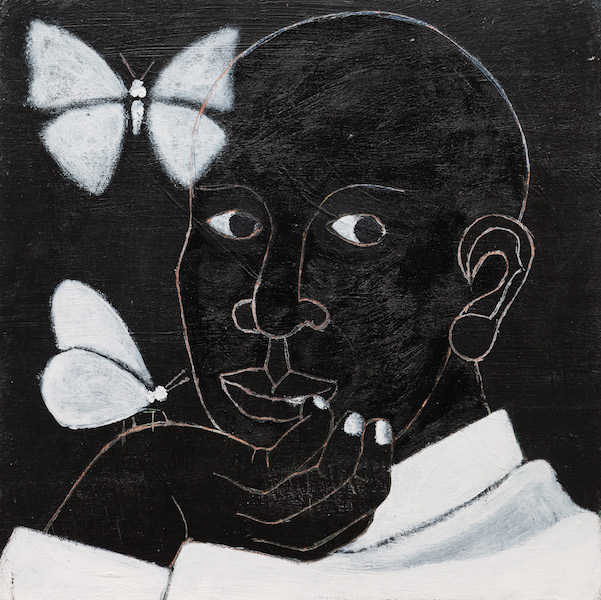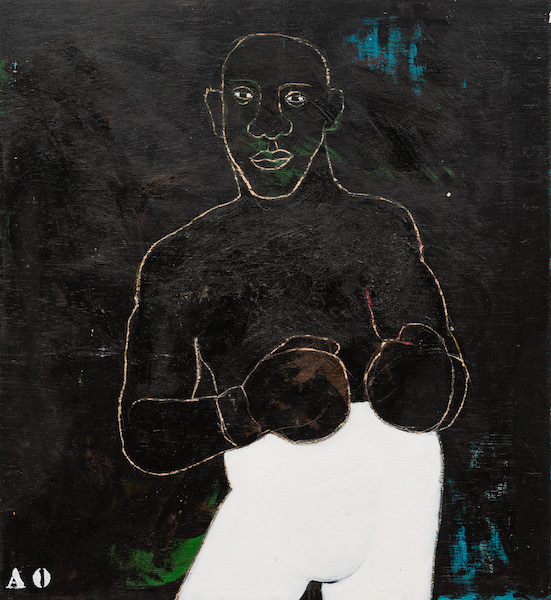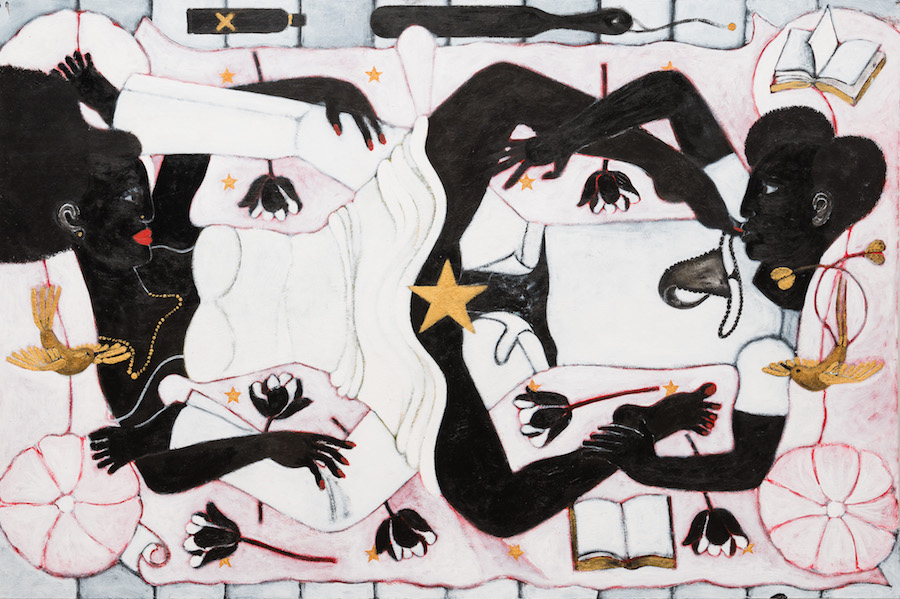
Abe Odedina
Dura Mater, 2016.
About:
Abe Odedina was born in Ibadan, Nigeria in 1960 and currently lives in London and Salvador Bahia.
Odedina, who is a trained architect, started painting on a trip to Brazil in 2007 where he fell under the spell of the popular arts of Bahia and Pernambuco. Now a full-time painter, Odedina describes himself as a folk artist. The ideas inspiring his work are rooted in the rich figurative and oral traditions of African art, infused with a trace of magic realism. His work is exuberantly non-elitist, celebrating the power of the everyday and the mythical.

Come Hither, 2016.
Odedina paints with acrylic on plywood, making flat surfaces with vibrant, stylised subjects that delight in the use of colour and symbols to create a figurative and imaginative pictorial statement. Odenina’s bold and hybrid visual language conjures energy from the streets and surfaces from cities like Lagos, Salvador de Bahia, and Port-au-Prince: the walls of temples, beer parlours, and love motels – advertisements for barbers, vulcanisers, and healers.

Balls of Steel, 2016.
The legibility of Odedina’s stylistic vernacular, warmly hailed as “Brixton Baroque”, is paramount. His allegorical works simultaneously inhabit different dimensions and gestures, engaging viewers in a conversation filled with personal and universal references. “The struggle is to reconcile bold imagery with ideas about ambiguity or indeterminacy, my intention is to arouse the imagination and heart of the viewer and to detonate ideas in another realm.”

Gold Star Champions of Love, 2016.
Odedina references objects and symbols from our collective imagination and activates them with timeless and relatable characters – magicians, goddesses, lovers – to create accessible acts of communication. His work is operatic whilst triumphing the power of the everyday, the vocabulary of the street, where religious iconography meets advertising and everyone promenading has an inner superhero full of poignant power.

Invisible Man, 2016.
Odedina is influenced by a diverse range of creators – Voodoo practitioners from Haiti, the Painters of the Sacred Heart, anonymous African craftsman – championing those who choose to be makers. His practice seeks to revive and deconstruct quintessential classical themes spanning from ancient Greek to Yoruban mythologies to create a charged dialogue between epochs, cultures, and peoples. The stories breaking through the surface of his paintings surpass physical borders. They activate a uniquely contemporary conversation with the viewer that oscillates between life and art, and in the folk tradition, life trumps art. (courtesy Ed Cross Fine Arts London)
